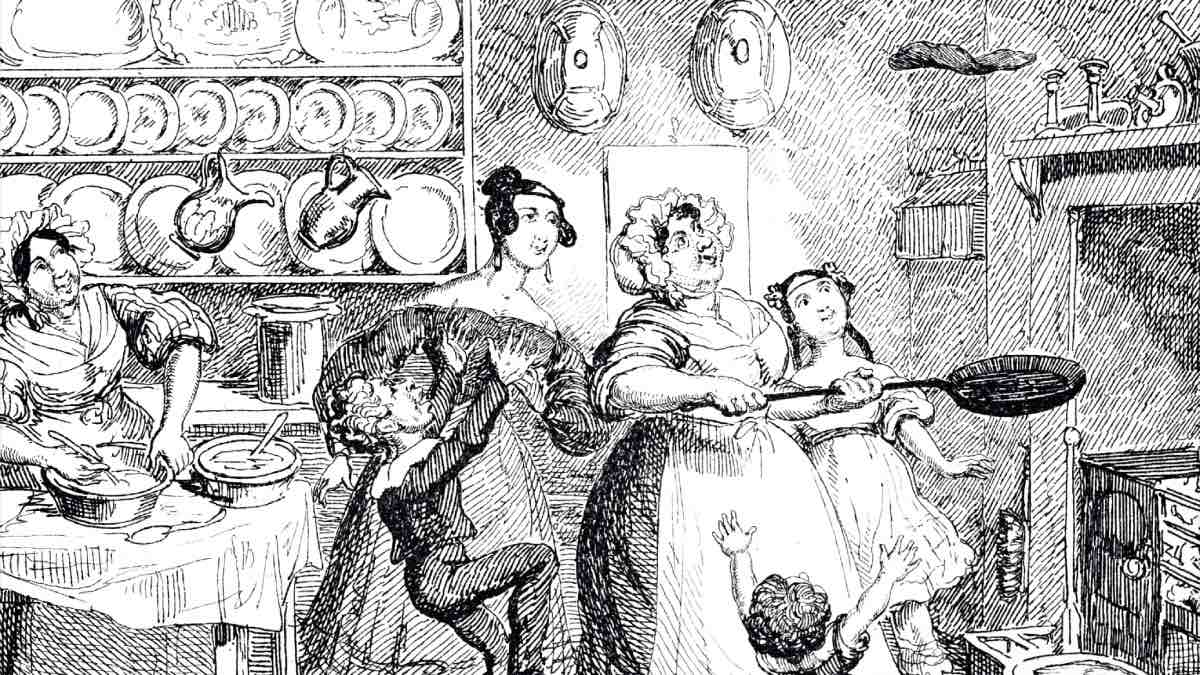Click here to read the Spanish version.
You went into the kitchen to make a stew and it came out a mess, sound familiar? When you go to prepare a dish and it turns out a disaster, it is a very common thing. However, there are times when that mistake turns into a great dish and something completely unexpected comes out. Delicious mistakes that end up becoming wonderful dishes.
From misdirection to delight
Kitchen tinkering has given rise to world-famous dishes, such as tarte Tatin. Sisters Stéphanie and Caroline Tatin had inherited a hotel south of Orleans from their father. One busy day, Caroline got lost with some apples and they were too brown. In order not to throw the fruit away, the cook decided to put a dough made with flour on top and turn it over before serving. And thus was born the tarte Tatin, a delight for the taste buds.
There is another dessert that also came about by mistake. We are talking about crêpes Suzette, the crepes with sugar and orange juice… The story begins in 1895 with Henri Charpentier as the protagonist; the boy was then 14 years old and worked at the Café de Paris in Monte Carlo. One day the Prince of Wales, the future King Edward VII of England, passed by and the boy wanted to show off with a new dessert, but he had an accident and the crepes caught fire. When the fire was extinguished, he tasted the crepes and loved the result… and so did the prince, who asked what the dessert was called. Charpentier replied “crêpes princesse (princess)”. Next to the future king was the daughter of a companion of the royal retinue, named Suzette, and this is how the dessert came to be called.
Another mistake led to the birth of soufflé potatoes. It was 1837 and the inauguration of the railway line to Paris, attended by Queen Maria Amelia of Bourbon-Two Sicilies. On the menu of the restaurant where they were going to eat there were fried potatoes but, after having already put them in the pan, they warned the cook that the train was late. “Then the fries sat idle. When the cook was finally warned that the royal retinue was arriving, he put the potatoes back in even hotter oil, fearing that they were not done enough. And they puffed up. And so soufflé potatoes were born,” explains Jaime Lieberman, of Spoonik Barcelona.
From mistakes to successful products
Many products on supermarket shelves have their origin in an oversight. Take chocolate cookies, for example. Ruth Graves Wakefield, who had a boarding house, Toll House Inn, in a Massachusetts town, wanted to make chocolate butter cookies, but lacked this ingredient, so she used a chocolate bar that she chopped up, thinking that it would melt. However, the chocolate remained in pieces. The cookie became a hit and the recipe ended up appearing in the local newspapers.
One of the quintessential international snacks also originated in a mistake. The potato chip was born in a restaurant in Saratoga Springs. A disgruntled customer returned a dish claiming that the chips were not crispy enough (in fact, they were too thick). This led the cook, George Crum, to prepare potatoes so thin that it was difficult to prick them with a fork, and the customer was delighted with the result. Another version claims that it was the cook’s sister who invented them when she accidentally dropped a slice of potato into the hot oil.
In 1894 brothers Will Keith and John Harvey Kellogg were working in a Michigan hospital looking for healthy food for patients. Will mistakenly left some boiled wheat unstored and when they saw it they thought it was already spoiled but instead of throwing it away they tried to flatten the dough but it broke. They then decided to toast those leftovers and give them to patients who had stomach problems: toasted wheat flakes -you know how Kellogg’s was born- were a success and they started experimenting with other cereals such as, for example, corn.
And finally, a sauce, Worcestershire: at the beginning of the 19th century Lord Sandys returned to his country after living in India. He wanted to create a recipe with the spices he had known and hired two chemists, John Lea and William Perrins. However, they did not like the result and ended up abandoning the jars with the concoction. But years later they tried it and loved the result: the fermentation process had changed its original flavor. That’s how Lea and Perrins started bottling their vinegar and spice mixture.

